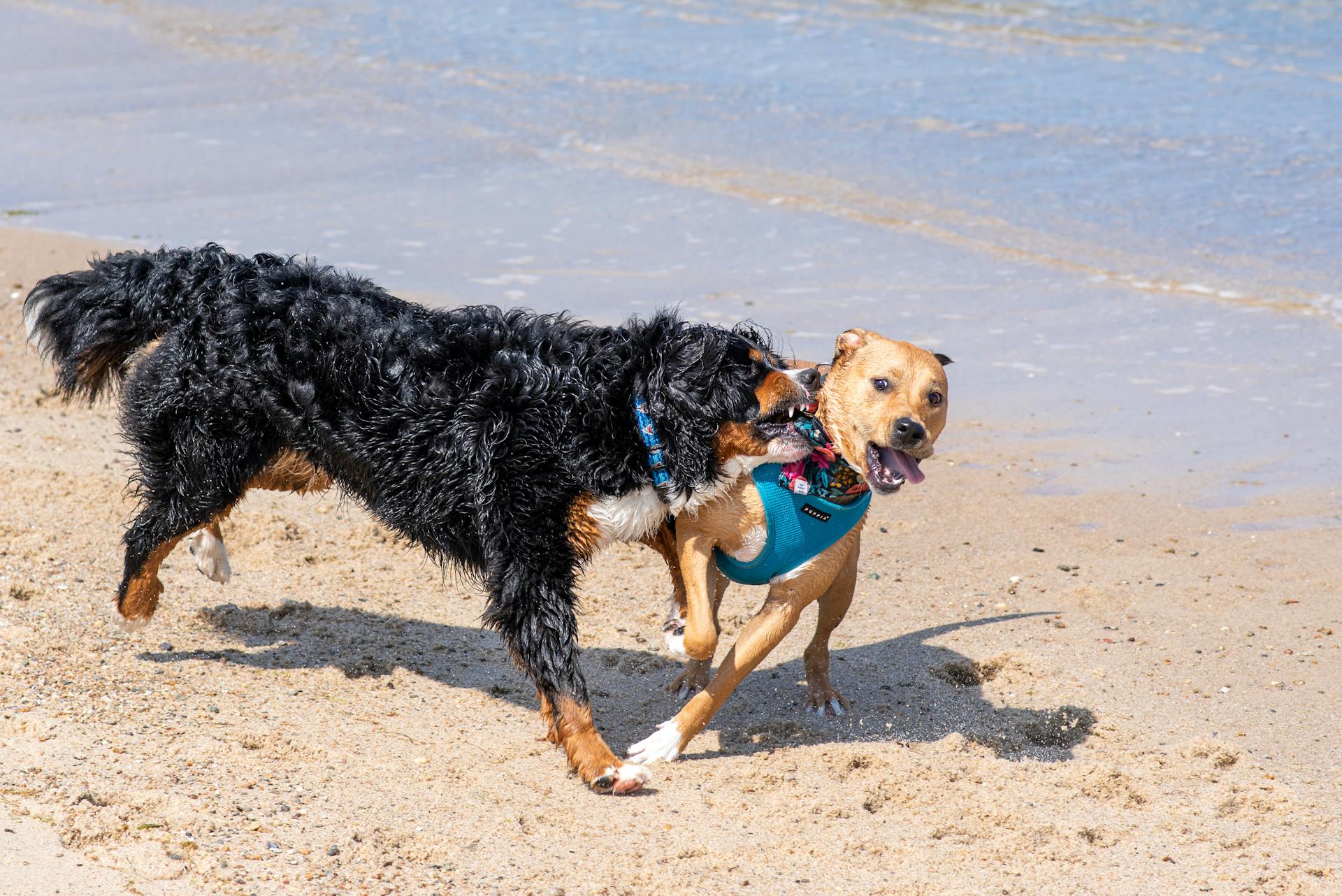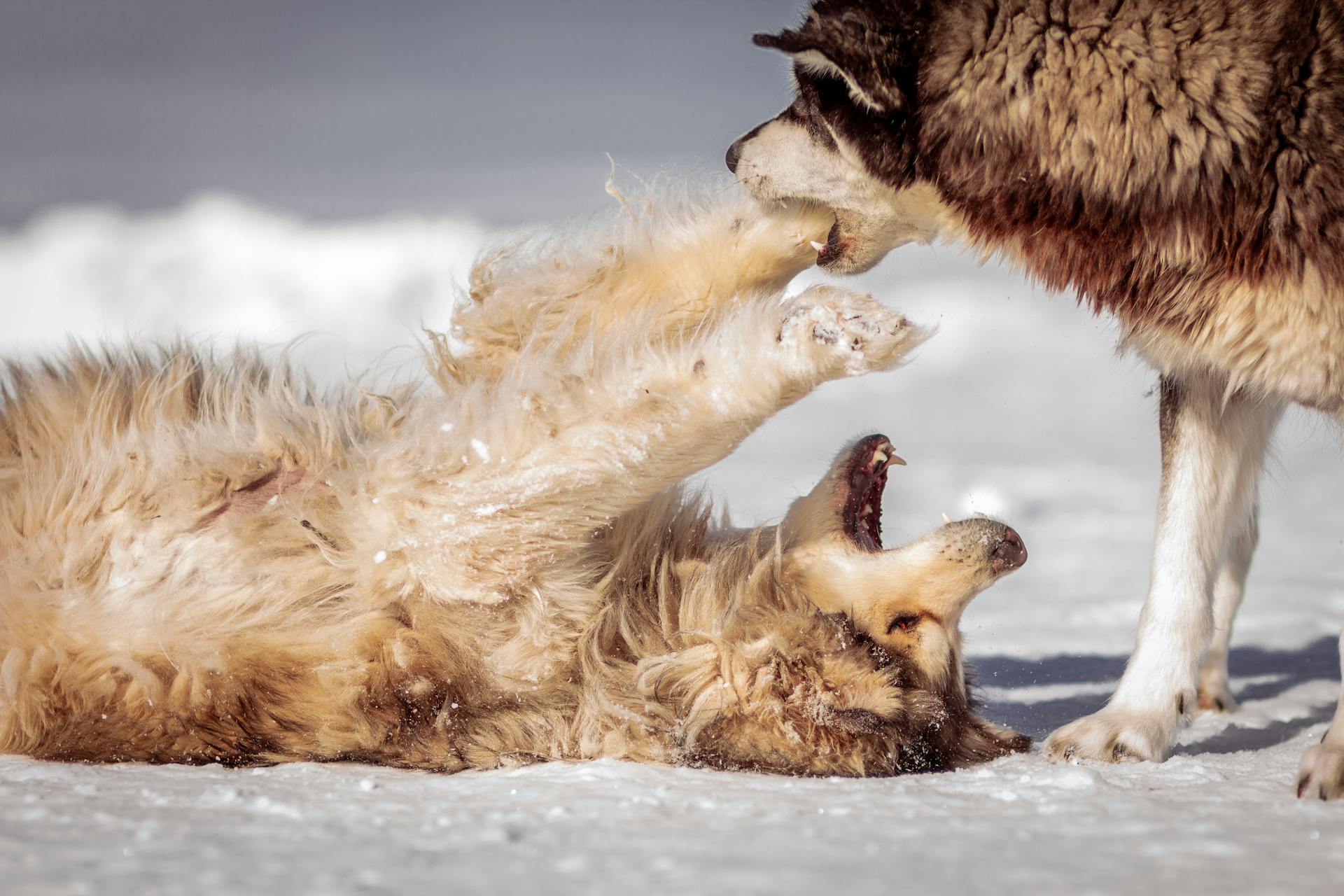
As we explore the fascinating history of dogs and humans, it's clear that our relationship has been shaped by thousands of years of mutual evolution. The earliest archaeological evidence suggests that dogs were first domesticated from gray wolves around 15,000 years ago.
Dogs quickly became an integral part of human society, serving as companions, hunters, and protectors. Their ability to adapt to a wide range of environments and tasks helped them thrive alongside humans.
From ancient civilizations to modern times, dogs have played a significant role in human history, from hunting and herding to assisting people with disabilities.
What Is a Dog?
Dogs are a domestic mammal of the family Canidae and the order Carnivora, with the scientific name Canis lupus familiaris.
They are a subspecies of the gray wolf and are related to foxes and jackals.
Dogs are one of the two most ubiquitous and most popular domestic animals in the world, with cats being the other.
For over 12,000 years, humans have lived with dogs as companions, protectors, and friends.
Dogs evolved from the gray wolf into more than 400 distinct breeds through human breeding and selection.
Humans have played a significant role in creating dogs that fulfill distinct societal needs.
The first dogs were likely hunters with keen senses of sight and smell, which humans developed and built upon.
Dogs are regarded differently in various parts of the world, with Western society valuing their loyalty, friendship, protectiveness, and affection.
Ancestry and Evolution
Dogs and humans have a long and complex history together, and understanding their shared ancestry can help us appreciate just how special this relationship is.
Semi-domesticated animals, likely including early dogs, frequently returned to the wild and interbred with wolves.
The New Guinea highland wild dog is thought to have left mainland Asia in the company of humans, and then returned to the wild before evolving into the dingo.
Black wolves have been found to carry a small amount of dog DNA, showing just how blurred the lines are between our canine companions and their wild ancestors.
Perri cautions that it can be nearly impossible to tell if early canine remains were dogs or wolves, which is a fascinating reminder of just how complex this history is.
Related reading: Just Nuisance
Human-Dog Relationship
The human-dog relationship is a complex and evolving one. We've been living with dogs for thousands of years, and it's clear that our bond with them has deepened over time.
More than three-quarters of dogs worldwide are free-ranging animals, existing in a liminal state between wildness and domesticity. This suggests that domestication is still a work in progress.
Studies have shown that women are the primary caretakers of dogs in more than 70 percent of households. This might be because women are more likely to anthropomorphize their dogs, speaking to them in "doggerel" or "motherese" – a type of baby talk.
The increasing value placed on the human-dog relationship is evident in the growing number of dog owners, particularly among millennials. In China, where dogs have been served as food, pet ownership is growing exponentially.
Dog burials have been a part of human culture for thousands of years, with evidence of careful interment found all over the world. This suggests that our bond with dogs is strong enough to warrant special treatment even in death.
Here are some key statistics on the human-dog relationship:
- More than 70 percent of dog owners are women.
- More than half of millennials own dogs.
- Over three-quarters of dogs worldwide are free-ranging animals.
- Dog burials have been practiced for thousands of years.
Some research suggests that dogs may be able to visualize their owner's face when they hear their voice, and are drawn to images of their owner's smiling faces. This could indicate a level of emotional attachment between dogs and their owners.
The release of oxytocin, often referred to as the "love hormone", in both human and dog urine when they look at each other is a compelling piece of evidence for canine love. This hormone is also released in humans during activities like hugging and sex, suggesting a strong emotional bond.
The mutual benefits of the human-dog relationship are clear, with dogs providing companionship and emotional support to humans, and humans providing care and protection to dogs. This symbiotic relationship has allowed dogs to thrive and adapt to human environments.
Canine Behavior and Expression
Dogs have actually developed new facial musculature in the domestication process, which helps them furrow their brow and make those adorable "puppy dog" eyes.
These expressions have a strong impact on humans, and it's no wonder why dogs are often adopted more quickly if they make an archetypically worried or sad expression.
Our pets seem to know that we respond to their expressions, too - they make more of them when we're paying attention than when we're not.
Dogs also make extensive use of eye contact to communicate with us, and studies have shown that they make even more eye contact than dingoes, which are roughly intermediate in the domestication process.
In fact, domestic dogs are skilled at using "gaze alternation" to direct our attention toward problems they're unable to solve, like extracting a hidden treat from a container.
Young puppies understand facial and gestural cues, even as young as possible, and it's likely that this ability is innate in dogs.
Additional reading: Can Dogs Use Human Eye Drops for Allergies
History and Influence
Dogs have been an integral part of human history for thousands of years. They were first domesticated from gray wolves around 15,000 years ago, likely due to their ability to scavenge for food and provide companionship.
The earliest archaeological evidence of dog domestication was found in a Bonn-Oberkassel dog burial dating back to 14,223 years ago. This discovery suggests that dogs were not only valued for their practical uses but also for their emotional support and companionship.
Humans and dogs have developed a unique bond that has influenced the way we live and interact with each other.
Differences in Early Domesticated Dogs
The Bonn-Oberkassel dog in Germany shows signs of physical deterioration due to advanced distemper, suggesting that it was cared for during its illness.
In some cases, early domesticated dogs received special treatment. A specimen found in a Roman burial in Tunisia was severely arthritic and missing teeth, indicating that it was a treasured pet.
A grave in Israel contains an adult woman with her head nestled against a dog or wolf pup dating back to about 12,000 years ago. This grave indicates the growing importance of canines in human life.
Dogs served as guides to the afterlife in Mesoamerica, with certain requirements for their presence. For instance, you'd have to have a yellow dog or a red dog, but not a black dog or a white dog.
Dog corpses were sometimes curled up, as if sleeping, during burial. This mirrors the treatment of human bodies when they are interred.
Macabre and Magical
In the realm of history and influence, the Macabre and Magical world has a rich and fascinating past. It's a place where the lines between reality and fantasy blur, and the strange and unknown become the norm.
The Salem witch trials of 1692 were a pivotal moment in this world, where fear and superstition led to the execution of 20 people accused of witchcraft. This event had a lasting impact on the cultural narrative.

The trials were sparked by a group of young girls who claimed to be possessed by the devil, leading to a wave of hysteria and accusations that swept through the community. This phenomenon is a classic example of mass hysteria.
The influence of the Macabre and Magical on popular culture is undeniable, with many authors, artists, and filmmakers drawing inspiration from this dark and mysterious world. The works of Edgar Allan Poe are a prime example of this influence.
Poe's stories and poems often explored the darker aspects of human nature, and his use of symbolism and irony has become a hallmark of the genre. His writing has been widely influential, shaping the way we think about the Macabre and Magical.
The intersection of the Macabre and Magical with folklore and mythology is another area of great interest. The use of supernatural creatures and magical beings has been a staple of folklore and mythology for centuries, and continues to be a source of inspiration for artists and writers today.
Women's Influence in Human Evolution
Women's influence in human evolution is a fascinating topic. Research suggests that women may have played a significant role in shaping the dog-human bond.
In a cross-cultural analysis, Washington State University researchers found that dogs' relationships with women may have had a greater impact on the dog-human bond than relationships with men.
Women's involvement with dogs led to increased utility for the dogs, as well as a greater sense of personhood.
This study adds evidence to the evolutionary theory that dogs and humans chose each other, rather than the older theory that humans intentionally sought out wolf pups to raise on their own.
Dogs have indeed been able to thrive as a species, with a presence everywhere humans are.
The success of this relationship is evident in the fact that dogs have hitched themselves to humans and followed them all over the world.
Unraveling the Mystery
Domestication likely happened slowly, in fits and starts. It's fascinating to think that wolves more likely became acclimated to humans while scavenging the remains of their kills.
Wolves on their way to becoming dogs were a great alarm system, and domestic dogs are indeed more vigilant than wolves. This suggests that early humans may have initially attracted wolves due to their usefulness in alerting them to potential threats.
The relationship between humans and wolves was likely reinforced by the innate human attraction to pedomorphic features, such as wide eyes and shortened faces, seen in wolf puppies and exaggerated in domestic dogs. These features made wolf puppies look like infants, which may have been appealing to humans.
An ethnographic study co-authored by Robert Quinlan found that women's perceptions of dogs were positively correlated to both their utility in a given society and their status as persons. This suggests that women may have played a significant role in consolidating the friendship between humans and dogs.
Dogs and Humans' Oldest Companions
Dogs have been human companions for thousands of years, with evidence of dog burials found all over the world. Dog burials are a testament to the strong bond between humans and dogs.
The history of dog domestication dates back to around 12,000 to 14,000 years ago, when early remains show morphological and genetic differences from wolves. This marks the beginning of dog domestication.
Dogs have been given human-like burial rites for thousands of years, with some burials even including symbolic elements such as jaw bones. This suggests a deeper connection between humans and dogs than just companionship.
Studies have shown that dogs are able to visualize their owner's face when they hear their voice, and are drawn to images of their owner's smiling faces. This indicates a level of emotional connection between dogs and their owners.
Dogs have even been found to be more strongly drawn to people who are pretending to cry, suggesting an empathetic instinct.
Sources
- https://www.britannica.com/animal/dog
- https://www.sapiens.org/archaeology/domestication-dogs/
- https://www.discovermagazine.com/the-sciences/dogs-have-co-evolved-with-humans-like-no-other-species
- https://news.wsu.edu/press-release/2021/01/25/women-influenced-coevolution-dogs-humans/
- https://www.bbc.com/news/science-environment-54690458
Featured Images: pexels.com


